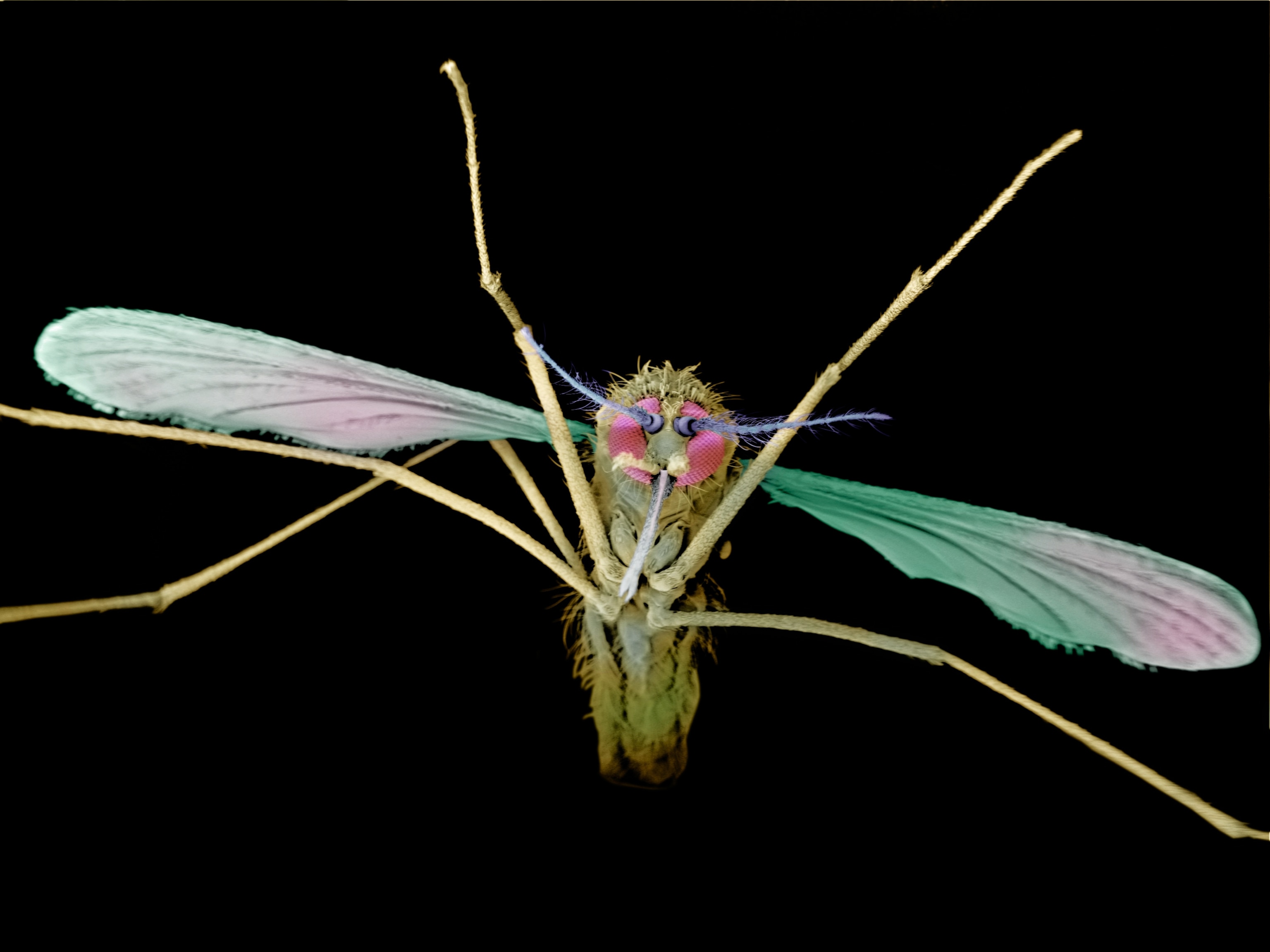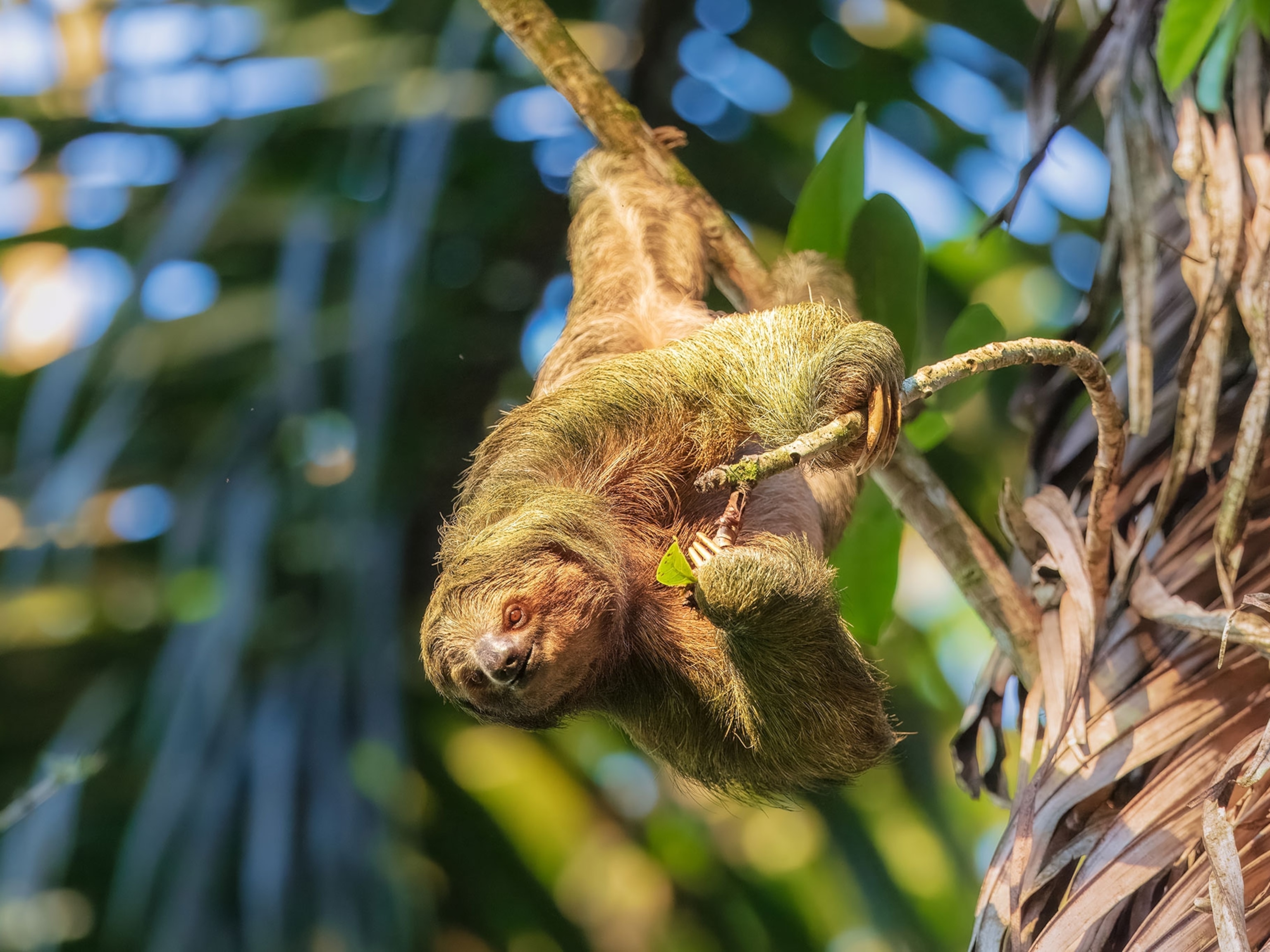
How a Tiny Guppy Mysteriously Traveled Hundreds of Miles
One researcher found records requesting guppies for a U.S. Army base once stationed at the Brazilian island.
Meet Poecilia vivipara—a small, shiny yellow guppy found in South America.
When a group of scientists visited the Fernando de Noronha archipelago a decade ago, they found the tiny freshwater fish. Questions immediately arose on how they got there.
Fernando de Noronha sits over 200 miles away from mainland Brazil. Like many of its type, it has volcanic origins. Its islands sprang up from underwater volcanoes erupting and forming land at the surface. This means it's difficult, to say the least, for animals from the mainland to make the journey to the island and form a stable population; so when scientists found the guppies, they set out to trace their origins.
"Poecilia vivipara lives mostly on freshwater habitats in the mainland, so we suspected that its presence there was 'unnatural' somehow, and started looking for potential explanations," says evolutionary biologist Waldir Berbel-Filho. In his paper about the find, published in the journal ZooKeys, he outlines his investigation.
It started with genetic sequencing. Berbel-Filho wanted to see if and how closely the Fernando de Noronha guppy related to those living in mainland Brazil. Sequencing the DNA of several guppies, they found it was similar to a guppy living near a river in Natal, Brazil.
"The Noronha guppy population is indeed from the same species as the one on the mainland, mainly the ones in northeast Brazil, where only two genetic differences (in 610 bases pairs) were found between Noronha and its closest mainland counterparts," explained Berbel-Filho.
Little Fish, Big Journey
Knowing the population evolved on the mainland, he then set out to figure out how the small guppy journeyed across the ocean.
Several reasons make it unlikely, though not totally out of the question, that the guppy would have been able to make the 200-mile swim.
The ocean current moving through the archipelago moves toward the mainland, meaning the guppies would have been swimming against the current during their journey. Along the way, any babies they would have had would have been a live birth. This species doesn't give birth via eggs, making it less likely they simply drifted or were carried by birds.
"They're quite tolerant of salt water, but 200 miles is far," says David Reznick, an ecologist and National Geographic grantee who was not involved with the study. Reznick has looked at guppies in the southern Caribbean but knows of no other instance in which they were able to swim more than 200 miles. Occasionally, he notes, freshwater floods during rainy seasons have swept species several miles out to sea.
Mosquito Killers
Unsatisfied with a natural explanation, Berbel-Filho looked for answers in historical documents.
During World War II, Fernando de Noronha was the site of a U.S. military base. The biologist traced two reports from the American army requesting the guppies for mosquito control.
"We imagined that the most likely scenario was that the fish was brought from Natal," says Berbel-Filho.
"If it was performed during the Second World War as the historical record indicates, it cannot be confirmed without further investigation," says Andrea Thomaz, an evolutionary biologist from the University of Michigan who was not involved with the study. "With that being said, I do agree with the authors that recent human introduction seems to be more plausible."
Guppies are invasive in over 80 countries because of their use to control mosquito populations, notes Reznick. Guppies are frequently shipped to foreign water reservoirs and even used in aquarium tanks, where they control mosquitoes by eating the insects' larvae.
"Though I don't know how good they are at it," notes Reznick, who uses guppies in his own lab but still finds mosquitoes.
Berbel-Filho plans to continue studying the guppy, using larger sample sizes and conducting more genetic sequencing, to find more clues to its still mysterious journey across the sea.




